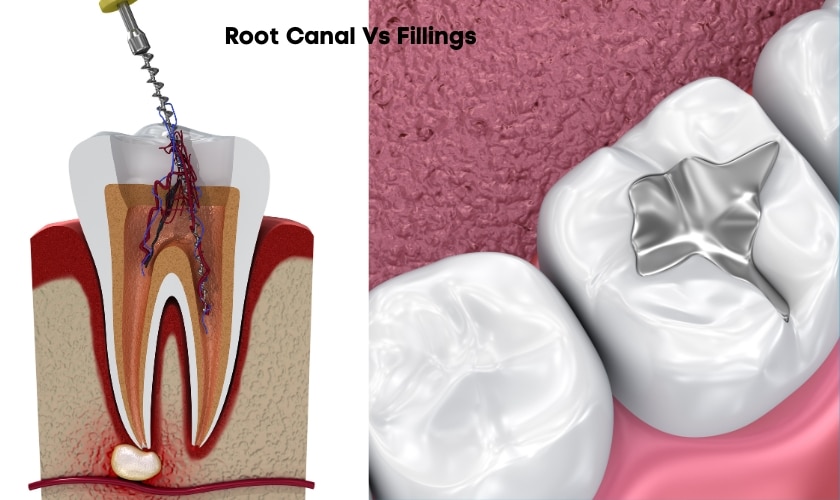What Do Cavity Fillings Look Like?
Cavity fillings are a fundamental part of modern dentistry, helping restore teeth damaged by decay and preventing further deterioration. Many people wonder, “What do cavity fillings look like?” The answer depends on various factors, including the type of filling material used, its location in the mouth, and how well it blends with the surrounding teeth. Fillings can range from nearly invisible to noticeably metallic, depending on their composition. Understanding their appearance is essential for those concerned about aesthetics and functionality.
The Role of Cavity Fillings in Dental Health
Cavity fillings serve a crucial role in preserving oral health by filling in decayed areas of a tooth and preventing bacteria from causing further damage. Without fillings, cavities would continue to expand, leading to infections, pain, and even tooth loss. While their primary function is to restore structure and functionality, the way fillings look also matters to many patients. The right choice of material can ensure that a filling remains discreet and does not interfere with the natural appearance of the teeth.
How Cavity Fillings Are Placed in a Tooth
The process of getting a cavity filling typically involves numbing the affected area, removing decayed portions of the tooth, and placing the filling material into the cleaned space. The dentist then shapes the filling to match the natural contours of the tooth, ensuring a comfortable bite and natural look. The final result depends on the type of material chosen, as some fillings blend seamlessly while others may be more visible.
What Silver Amalgam Fillings Look Like
Silver amalgam fillings are one of the most traditional types of fillings. Made from a combination of metals, including mercury, silver, tin, and copper, these fillings are known for their durability and strength. However, they are also highly visible due to their metallic appearance. Amalgam fillings typically appear as dark silver or gray spots on the teeth, making them stand out, especially when placed on front or visible teeth. While they are strong and long-lasting, their aesthetic drawback has led many patients to opt for less conspicuous alternatives.
The Appearance of Composite Resin Fillings
Composite resin fillings are among the most popular choices for those concerned about the visual appeal of their dental work. These fillings are tooth-colored and can be closely matched to the shade of natural teeth. They are made from a mixture of plastic and fine glass particles, resulting in a filling that is virtually invisible when properly applied. Because composite fillings blend seamlessly with the enamel, they are often used for front teeth or other visible areas.
How Gold Fillings Look in the Mouth
Gold fillings are less common today but remain an option for those looking for a long-lasting solution. Unlike silver amalgam, gold fillings have a warm yellow hue that can be easily noticed when a person speaks or laughs. While some people appreciate the distinct look of gold fillings, others may find them too noticeable for their liking. Their durability, however, is unmatched, as gold fillings can last for decades with proper care.
Glass Ionomer Fillings and Their Appearance
Glass ionomer fillings are another option that provides a more natural appearance than silver amalgam. These fillings are usually white or slightly translucent, allowing them to blend better with teeth than metal alternatives. However, they may not be as polished or seamless as composite resin fillings, and over time, they can become more noticeable as they wear down.
Ceramic Fillings and Their Aesthetic Appeal
Ceramic fillings, also known as porcelain fillings, offer one of the most aesthetically pleasing solutions for cavity restoration. They are designed to match the natural color of teeth, providing a near-invisible restoration. Ceramic fillings also resist staining better than composite resin, making them a long-lasting choice for those seeking a natural look. Because of their superior aesthetics, they are often used in cosmetic dentistry procedures.
Temporary Fillings and Their Appearance
Sometimes, dentists place temporary fillings before a permanent solution is applied. These fillings are usually white or gray and may not blend as well with the surrounding teeth. Temporary fillings are meant to be a short-term measure, so their aesthetic appeal is not a primary concern.
How Fillings Look Over Time
Over time, all fillings may experience wear and slight discoloration. Composite fillings may darken or stain due to coffee, tea, or tobacco use, while silver amalgam fillings can tarnish, making them look darker. Proper oral hygiene and regular dental visits can help maintain the appearance of fillings and extend their lifespan.
Do Fillings Change the Shape of Your Teeth?
Fillings are designed to restore the original shape of a tooth after decay is removed. Dentists carefully shape and polish the filling material to match the natural contour of the tooth, ensuring that it feels and looks as normal as possible. Properly placed fillings should not cause noticeable alterations in tooth shape.
Can You Tell If Someone Has Fillings?
In many cases, modern fillings are nearly undetectable, especially when made from composite resin or ceramic materials. However, silver or gold fillings are more noticeable, especially in the back teeth when laughing or speaking. Unless someone closely examines the teeth, well-placed fillings often go unnoticed.
The Best Type of Filling for a Natural Look
For those who prioritize aesthetics, composite resin and ceramic fillings are the best choices. They provide a natural appearance, closely resembling the surrounding teeth. These materials are particularly recommended for front teeth or visible areas where maintaining a natural look is important.
How Fillings Reflect Light Differently Than Natural Teeth
One of the challenges with dental fillings is that they may not always reflect light in the same way as natural enamel. Composite resin comes close, but certain lighting conditions may reveal a slight difference in texture. Ceramic fillings, on the other hand, offer the best light reflection properties, making them the most indistinguishable from real teeth.
Why Some Fillings Look More Noticeable Than Others
The visibility of a filling depends on its material, placement, and size. Larger fillings, particularly metal ones, are easier to notice. Fillings on front teeth require more careful color matching to ensure they do not stand out.
Conclusion
Cavity fillings play a vital role in restoring dental health and preserving teeth affected by decay. Their appearance varies based on the materials used, with options ranging from highly visible metal fillings to nearly invisible tooth-colored restorations. While some fillings, such as silver amalgam and gold, are more noticeable, composite resin and ceramic fillings offer excellent aesthetic solutions. Regardless of the type of filling chosen, maintaining good oral hygiene and regular dental checkups will help keep fillings in optimal condition for years to come.
fintechzoom.com nickel: A Comprehensive Guide to Nickel Investments and Market Trends




